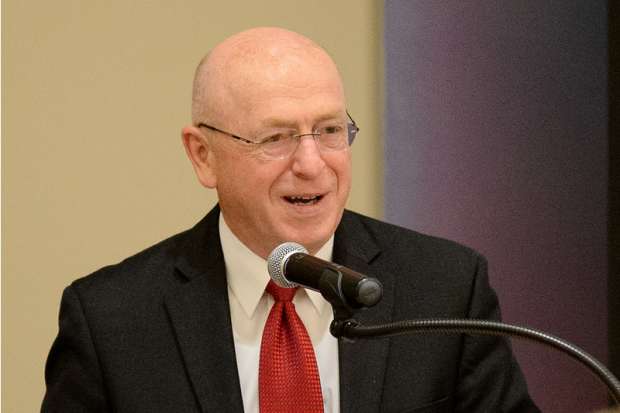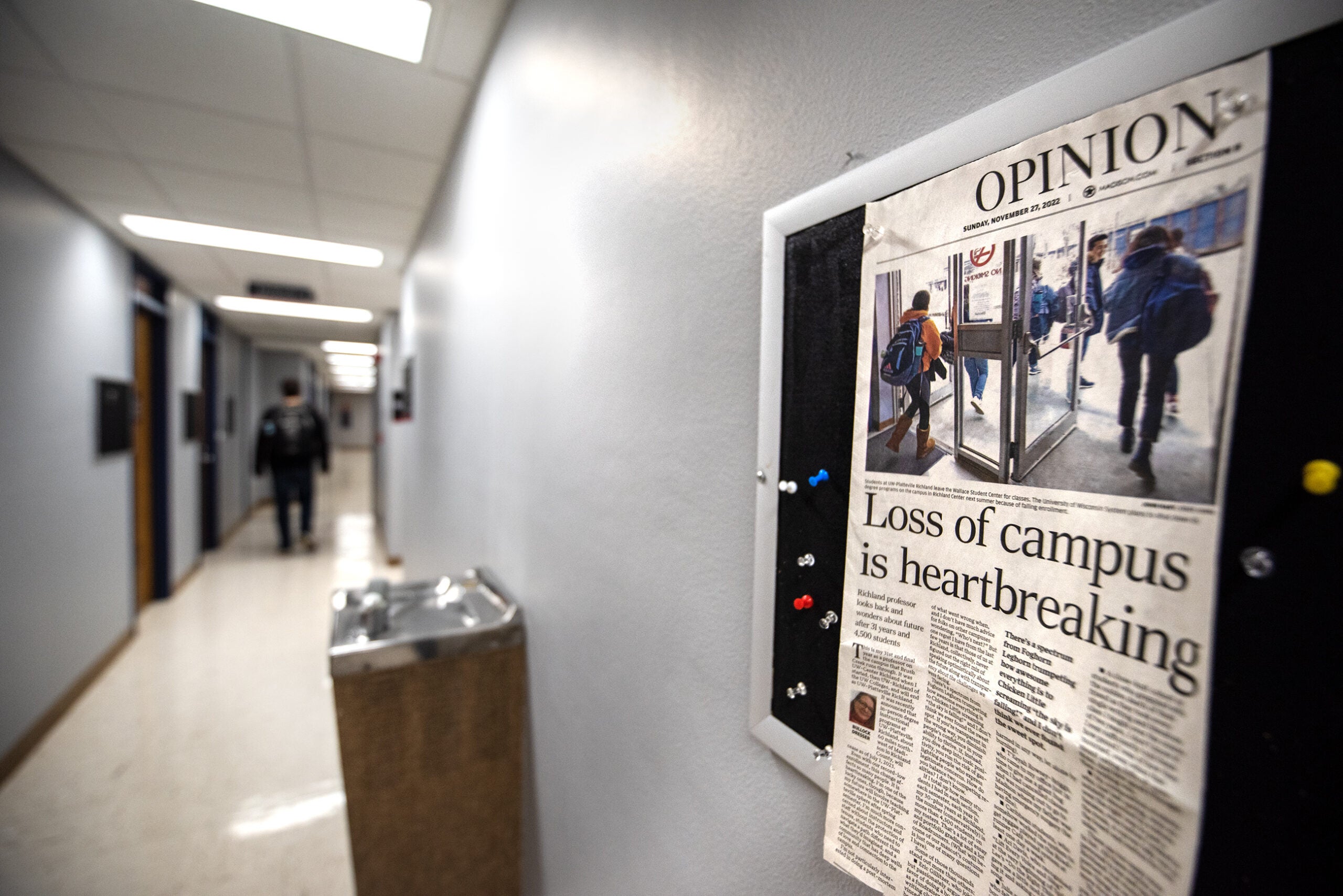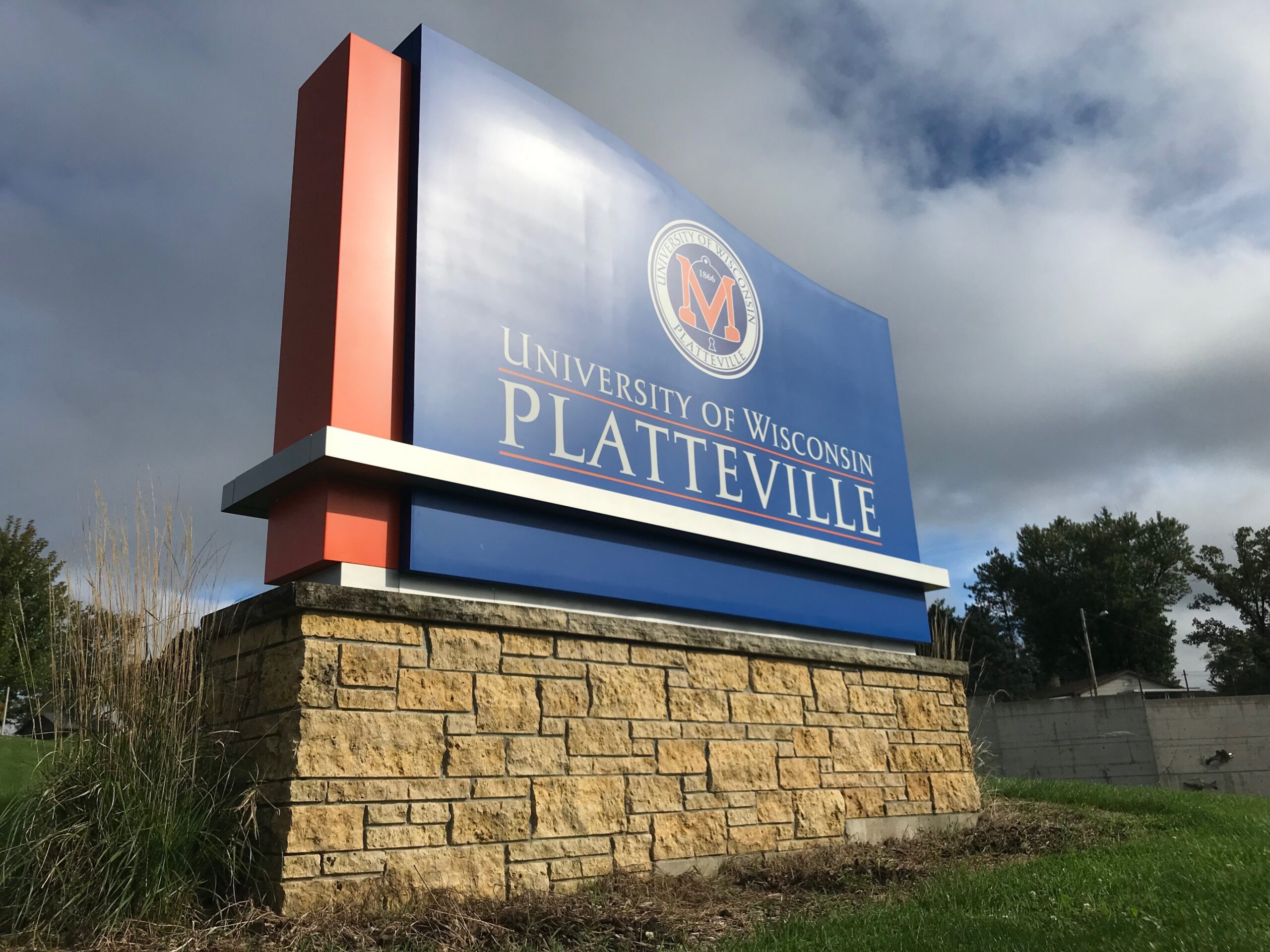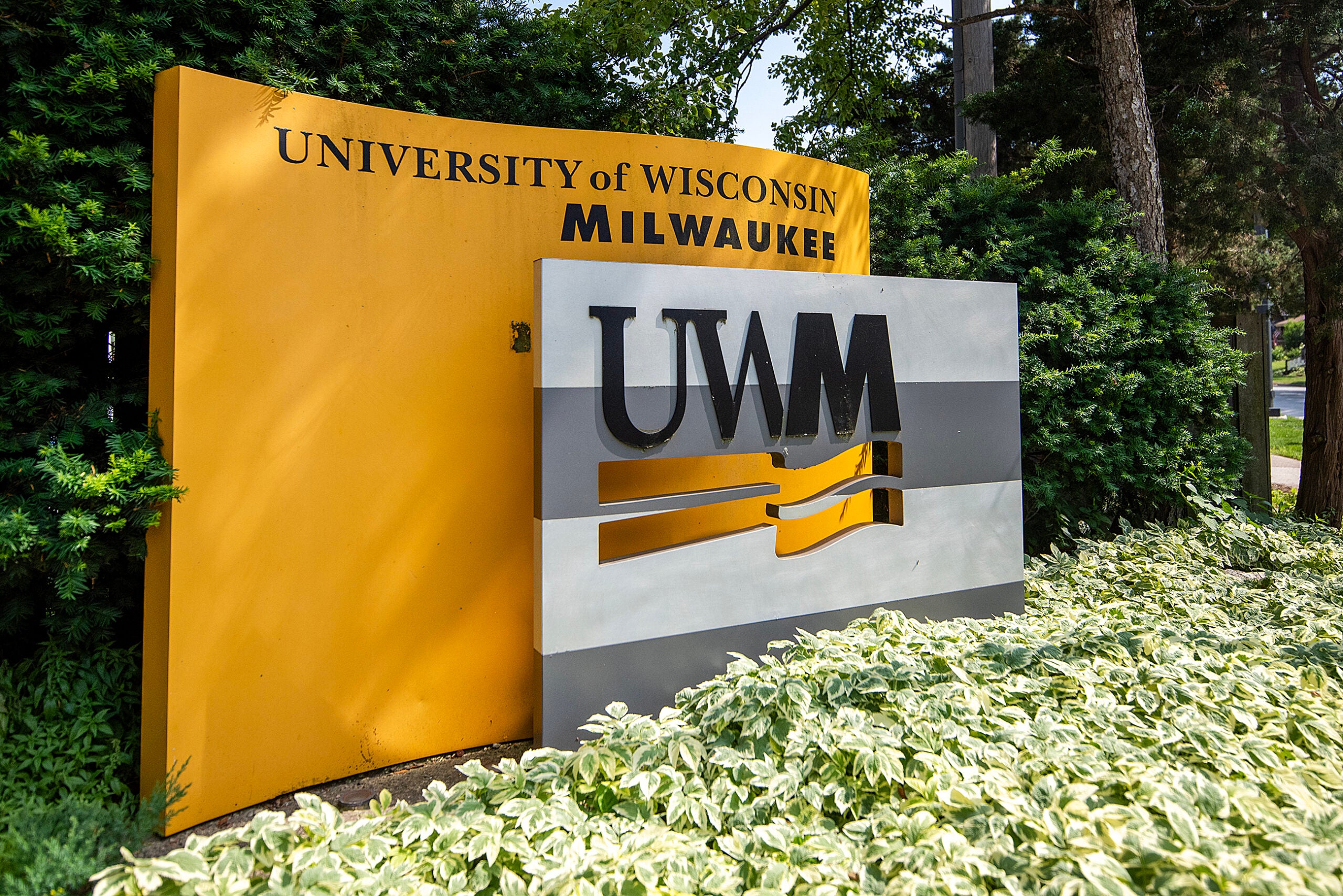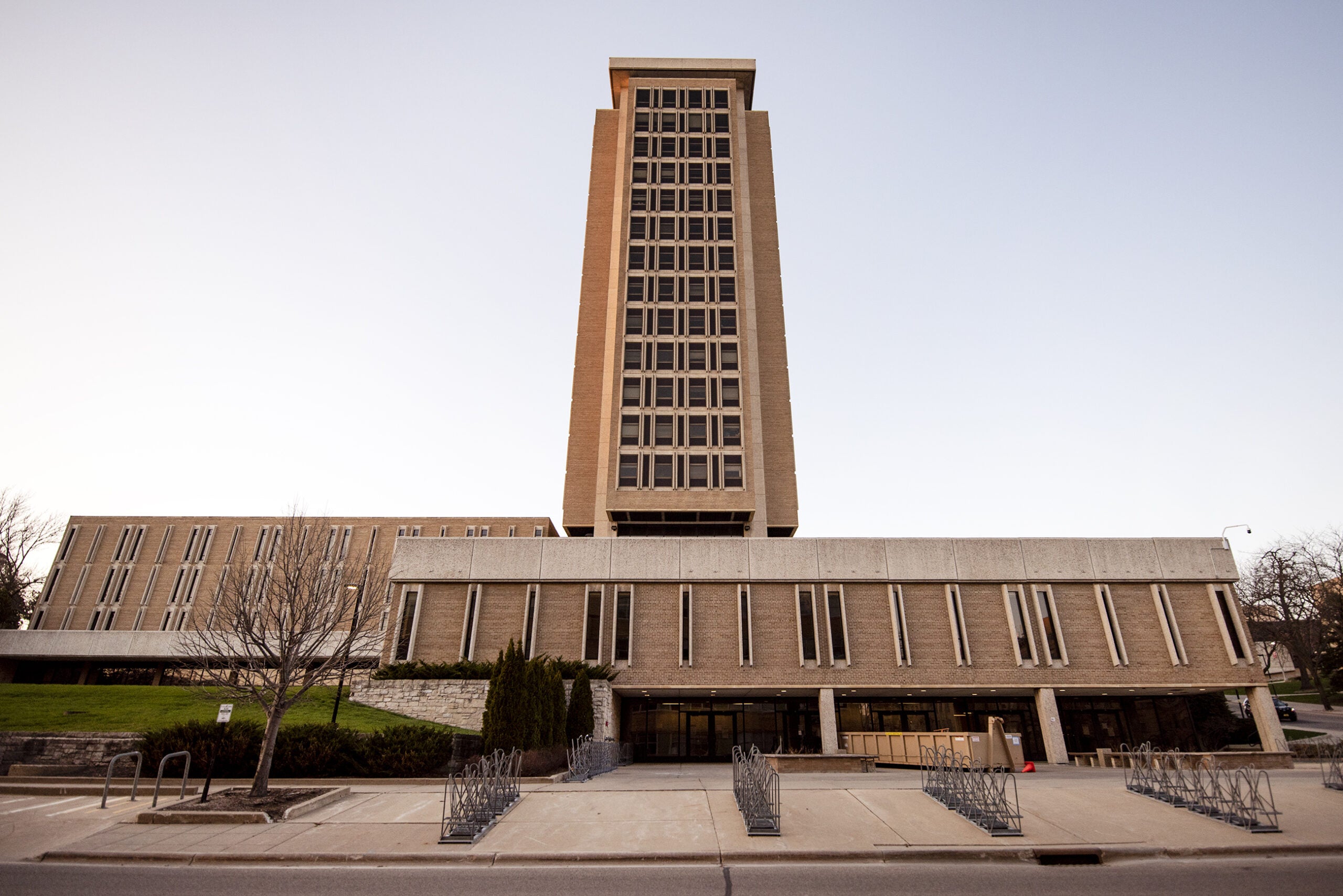The leader of the University of Wisconsin System’s two-year schools says a merger with the system’s four-year schools won’t be complete until the end of 2019 and that the next year will be a transition period for the schools.
The regents in November approved Cross’ plan to make the system’s 13 two-year schools regional branches of seven four-year campuses by July 1.
UW Colleges Chancellor Cathy Sandeen told the Board of Regents during a meeting Thursday that the upcoming academic year will mark the beginning of the transition. One reason for the transition year is because the U.S. Department of Education has decided that the existing schools must award financial aid through 2018-19.
News with a little more humanity
WPR’s “Wisconsin Today” newsletter keeps you connected to the state you love without feeling overwhelmed. No paywall. No agenda. No corporate filter.
Sandeen said the transition will be finished by at least Dec. 31, 2019. She also told the regents that the process needs to be done carefully for students.
“I mean it’s not that often that you dismantle or discontinue an accredited institution, and we wanna make sure that we do it right,” Sandeen said.
Sandeen went on to remind those present that the students at these two-year colleges are different than the students at four-year institutions. She cited statistics like a majority of students are also working while attending two-year schools.
“The students are very fragile,” Sandeen said. “They’re just one barrier or one problem away from stopping out or dropping out. So again, that continuity of service to them that we can provide will be very, very important.”
UW System President Ray Cross has said the merger is needed to combat declining enrollment at the two-year schools and to keep them open. The plan is designed to make transferring from the two-year campuses to the four-year schools smoother and attract more students to the two-year schools.
The plan is pending approval from The Higher Learning Commission.
Chancellors from the receiving four-year institutions told the regents about their hopes and concerns for the upcoming restructure.
UW-Platteville Chancellor Dennis Shields said his institution, which is merging with UW-Baraboo/Sauk County, is excited to help communities thrive, but there are issues. He said it’s hard to be accountable if things like funding aren’t concrete.
“Now is not the time for more uncertainty,” he said. “The sooner we can provide some certainty on some fronts, I don’t think anybody expects us to have this figured out all at once, but the sooner we can make some commitments and move forward, the more confidence the people on these campuses and in these communities and in these counties, who’ve made significant investments over time, the more confidence they’re going to have in us.”
In other news at the meeting, Cross said discussions about cutting more than a dozen liberal arts majors at UW-Stevens Point could extend into the fall.
Cross told the regents during the meeting that UW-Stevens Point officials are currently discussing the cuts with shared governance groups, faculty and students. He says those discussions could go on well into the fall semester.
He added that the regents have entrusted chancellors with the authority to change their schools’ programs and regents shouldn’t insert themselves into what he called a “campus-based conversation.”
Stevens Point Chancellor Bernie Patterson said after the regents meeting that the University is considering alternatives.
“The original proposal is certainly on the table and viable and we’re going to look at what else comes in,” he said. “And we’re continuing to have conversations, discussions on campus at every level in the communities. And at the end of the day, we’ll get to a good spot.”
UW-Stevens Point has proposed cutting the majors to cope with a projected $4.5 million budget deficit. The plan calls for adding or expanding 16 programs with a higher demand.
Editor’s Note: This story was last updated at 6:45 p.m. Thursday, April 5, 2018.
Wisconsin Public Radio, © Copyright 2025, Board of Regents of the University of Wisconsin System and Wisconsin Educational Communications Board.

